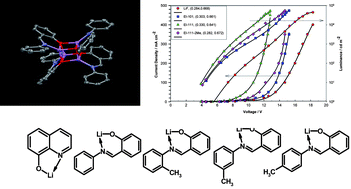Novel lithium Schiff-base cluster complexes as electron injectors: synthesis, crystal structure, thin film characterisation and their performance in OLEDs†
Abstract
A set of novel lithium Schiff base cluster compounds has been synthesised and characterised for the first time and tested as electron injectors in OLED devices. Their electrical, electronic, thermal and optical properties have been investigated and compared with the industry standards LiF and


 Please wait while we load your content...
Please wait while we load your content...